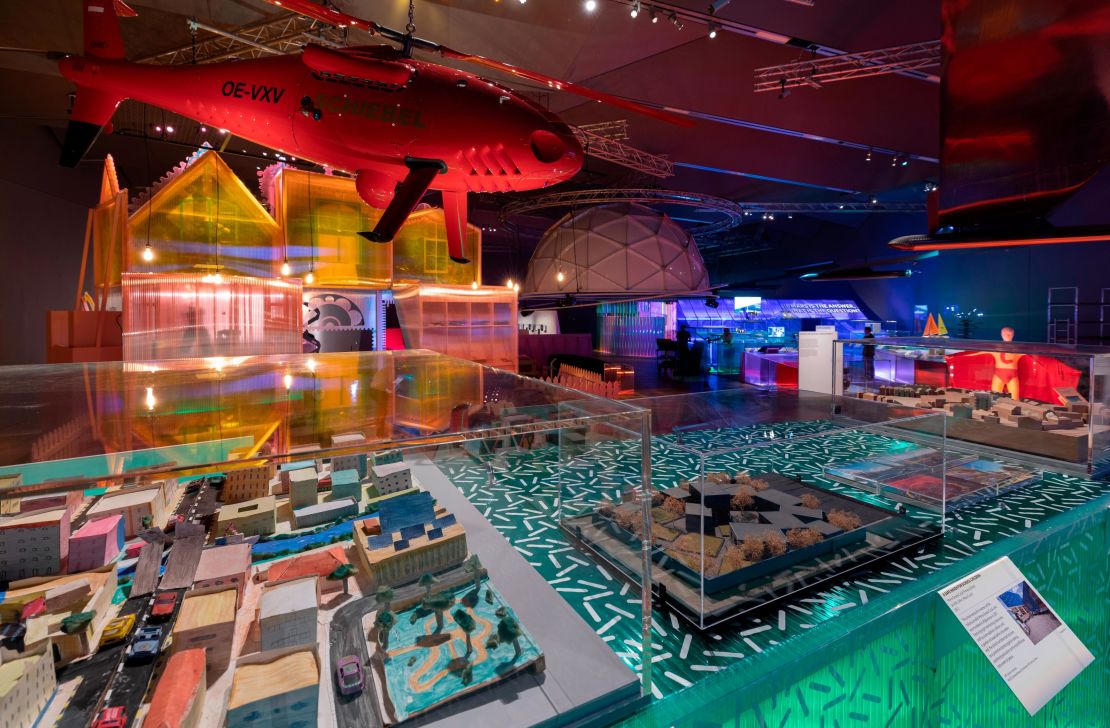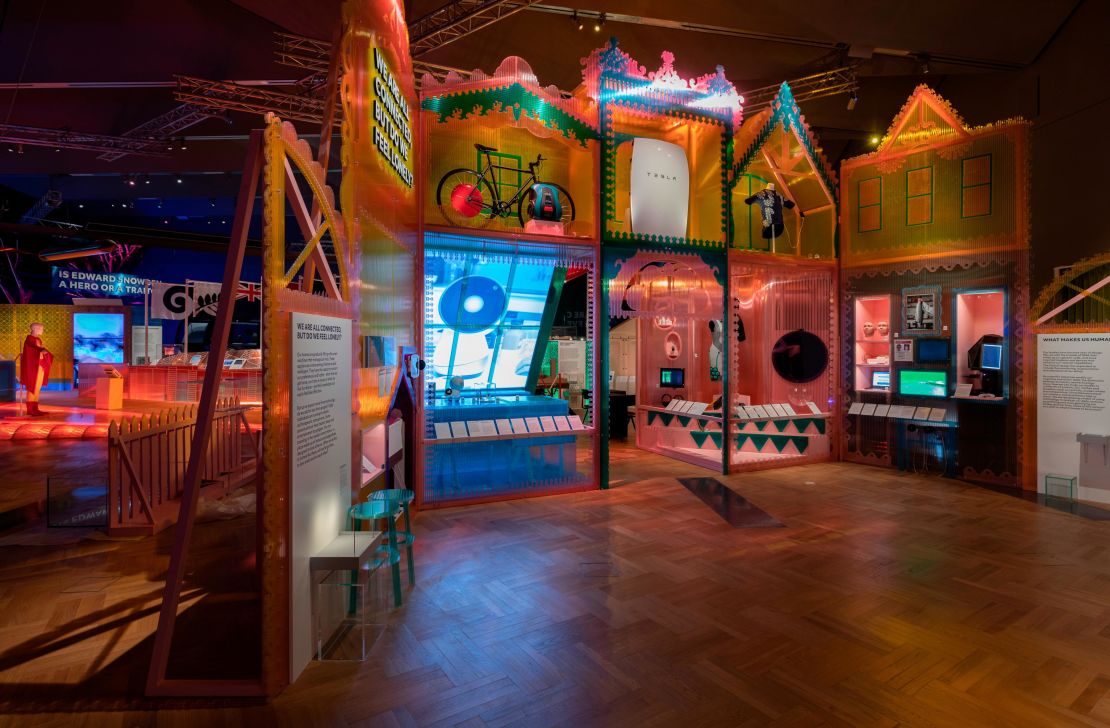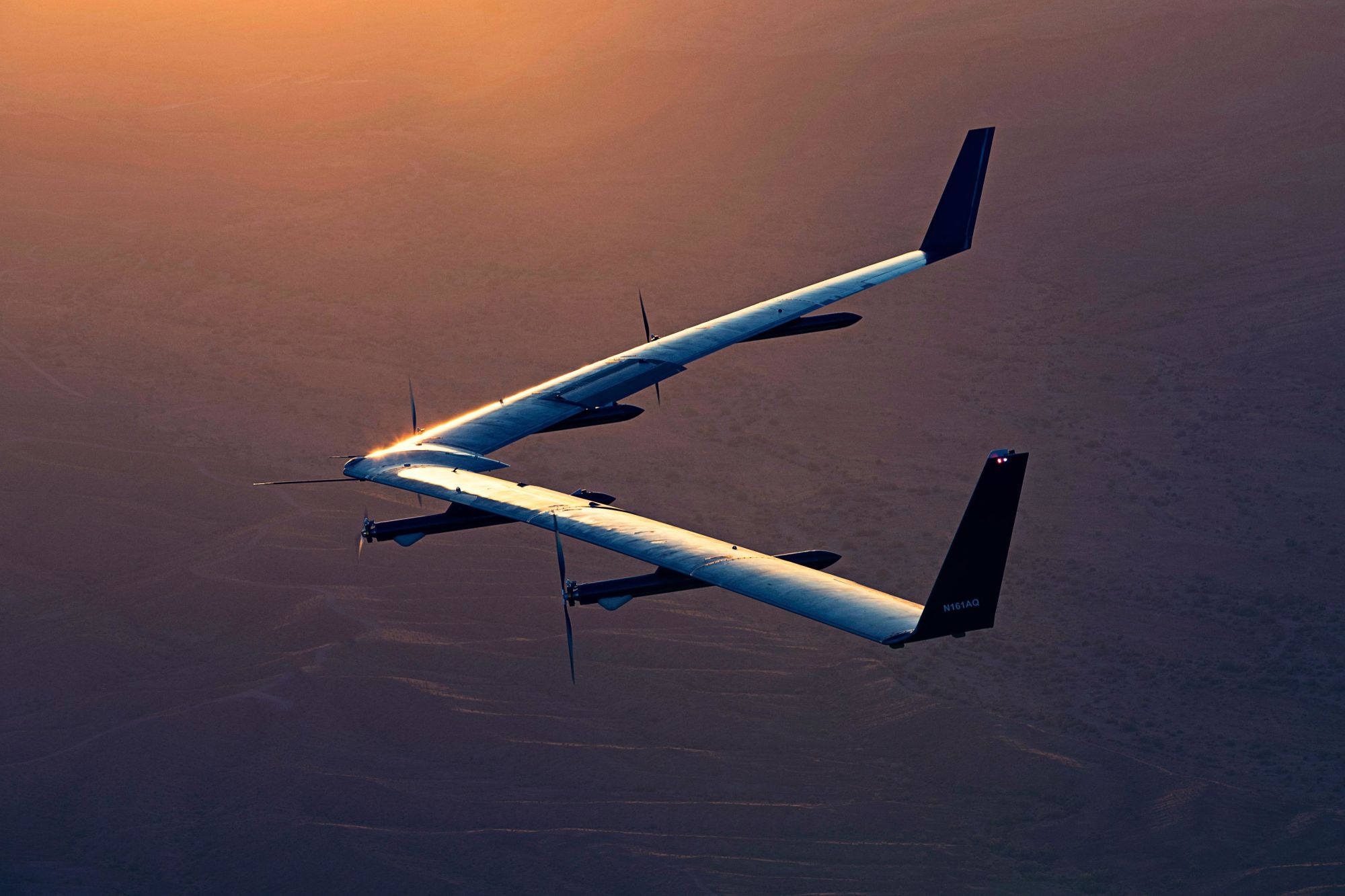The Future Starts Here, a new exhibition at London’s V&A museum, presents 100 objects that trace a line connecting our uncertain present to a better future. Or catastrophe.
At the entrance to the exhibition, which opens on 12 May, visitors are greeted by BRETT, a robot created by UC Berkeley to learn how to automate humdrum human tasks. Here, he is sat between a mocked-up washing machine and pile of sheets, trying to sort and fold laundry – and not doing a very good job.
There is something comforting for anyone worried about the robot apocalypse in seeing this high-spec piece of technology clumsily mashing a box of towels into shape.
Rory Hyde, co-curator of the show, says the “deep learning” robot –BRETT stands for Berkeley Robot for the Elimination of Tedious Tasks – is earnestly trying to figure it out. But staff have spent many hours watching it get to grips with reality.

“It really is the cutting edge of artificial intelligence, machine learning, and computer vision. It’s trying to solve these kind of problems, in the messy real world, rather the clear confines of a car manufacturing plant,” Hyde said.
“It’s something, at home, we can all do almost without thinking. But to watch how hard it is for a robot to do it is kind of fascinating, and I think people will be mesmerized by it trying to fold a towel,” Hyde laughs. “How difficult it finds it!”
Evidence of the future
The organizers call the 100 objects “evidence of the future”: not sketches of sci-fi fantasies far-removed from ours, but actually existing or part-functioning technologies which could soon revolutionize our worlds.
In a futuristic hangar below the marble sculpture-lined galleries of the V&A, the exhibition showcases tools for cryonics, a coffeemaker that works in space, an airplane that could broadcast Wi-Fi by laser, and an autonomous boat that cleans the seas.
100 objects that will shape the future
At a time when news reports expose how the invisible algorithms that promised to bring us together may have been used as tools to hijack democracy and drive society apart, the exhibition makes the case for physical engaging with tech products.
Hands-on
Visitors are invited to get hands-on: sculpt sand that transforms into a virtual map of rivers and snow-capped mountains, climb inside a driverless car and even sit and drink in one corporation’s vision of the future – solo dining with a nutrient-fortified drink of Soylent for one.

These are the “beginnings” of new ways of living, when we are not yet sure of the endings, says co-curator Mariana Pestana. We are at the fork in the road between better and worse futures.
“Could your toaster turn against you?” asks one poster; could even clumsy BRETT become a threat? One the first questions submitted to the exhibition’s Twitter bot, which aims to give answers about our future, asked if robots will replace us.
“The question we’re looking at is how will technology change our everyday lives?” says Pestana. “What kind of a world are all of these things bringing into play? Where do we fit into it? How do they change the way we think?”
The curators explain that they subscribe to “The Theory of the Accident”, described by French cultural theorist Paul Virilio. Virilio believes, ominously, that the invention of the ship already contained within it the sinking of the Titanic, and birth of nuclear power already contained the catastrophe of Chernobyl.
As these 100 prototypes are transformed into everyday objects, and creations like BRETT move from cack-handed to slick, taking a hands-on approach to technology will be crucial, says Pestana.
“These objects have unknown potential and unknown consequences that no one – perhaps not even their creators – can anticipate.”
The Future Starts Here is at London’s Victoria & Albert Museum until Nov. 4, 2018.
















